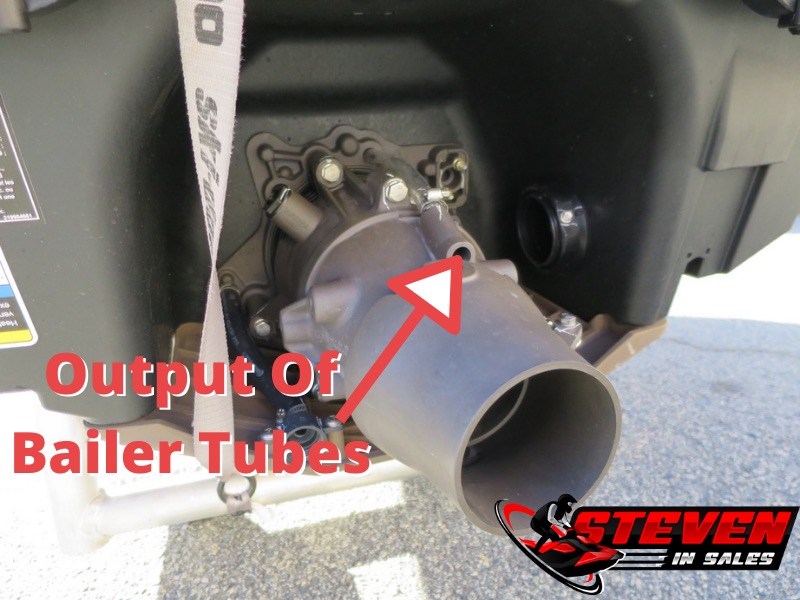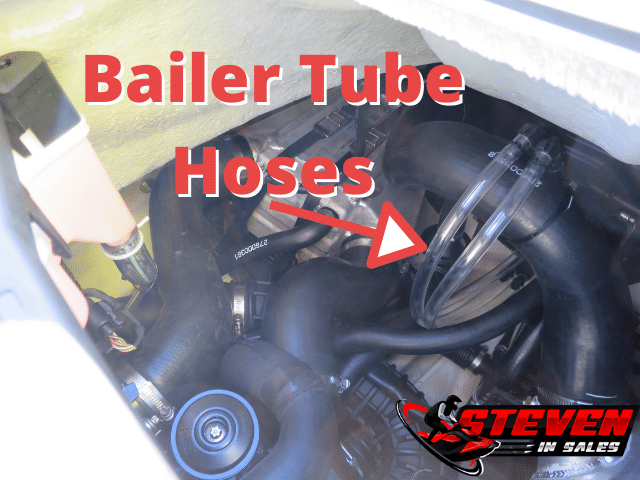A lot of the new riders I speak with previously owned boats and often have numerous boat-related questions about jet skis.
While these questions are reasonable and valid, the answers I provide often surprise them.
One common inquiry pertains to bilge pumps: how does it work, what’s this about bailers, and will they need one?
These are fair questions, and the answers aren’t always straightforward or ideal for many owners.
Hence, I’m writing this post to provide some reference points for my readers. There’s much to discuss, so let’s dive in!
What is a Bilge Pump?
When you need to remove water from the inside of a hull, you use what is called a bilge pump that is powered by the boat’s battery.
It’s common for boats to take on water during operation, necessitating a system to prevent sinking.
Some boats have automatic bilge pumps, while others require manual operation.
For new riders to the sport, they learn quickly that jet skis differ a bit from other boats.
Does a Jet Ski Come With a Bilge Pump?
While almost every boat may have one, many new riders will be shocked to learn that most jet skis are NOT equipped with bilge pumps from the factory and instead use “bailer tubes“.
I say most, as a “few models” will come with them.
What is interesting is that bailer tubes work the same way as a bilge pump, it sucks extra water out of the inside hull, but the difference is that bailer tubes only work when the engine is on.
It’s important to have a good battery as that is what powers the bilge pump for a boat.
Using the suction from the jet pump, the bailer tubes located inside your jet ski suck out the extra water. What is interesting is that the bailer tubes only work when the engine is on.
How Bailer Tubes Work
What really blows people away when I show them the bailer tubes is how simple they are; it’s literally only tubes.
The jet pump has one or two tubes sticking out that run into the hull. The tubes go up and then back down, no water comes in, but there is a one-way check valve too.
Creates A Vacuum
Due to the nature of a jet drive, it means jet skis use a direct drive system, so when the engine one, the impeller is moving, and that what propels you forward.
When you look at the pump, above the nozzle, you’ll see the “bailer tube(s)”, and water that rushes by these tubes creates a vacuum and sucks out any water in the hull through the bailer tubes.
Don’t Work if engine is off
But, turn the engine off, and the bailer tubes stop working.
If you see your craft is taking on water, the best thing you can achieve is to start moving and get to land, as the jet pump sucking out the water is the only thing keeping you afloat. (Though, it’s not perfect, so don’t expect it to work magic!)
Can A Bilge Pump Be Added?
With the many kits, especially ones from the manufacturers, you can install your own bilge pump on your jet ski.
However, here’s the catch: some kits require drilling a hole into the fiberglass of your jet ski!
In such cases, it’s safer to let the dealership handle the installation to avoid mishaps.
Many manufacturer kits include a float switch.
What’s that, you ask?
It’s a handy device that automatically activates the bilge pump when there’s enough water in the hull, keeping it dry without the need for manual intervention.
But Is One Required?
It seems like a no-brainer, right, getting a bilge pump on your jet ski? Sure, but it does depend on your riding style and where you keep your jet ski.
If you ride hard or in rough water, it’s smart to get one.
Similarly, if you never remove the drain plug while on a lift, it’s also a good idea to get a bilge pump and keep the battery charged on your watercraft.
It’s not perfect
It’s important to note that a bilge pump is not foolproof and not meant to be a solution that allows you to keep your machine in the water all the time.
The batteries are small and a water pump running all the time will drain it, getting a solar charger can help.
Why Are They Not On Every Machine?
You might wonder why most models don’t come equipped with some kind of water pump, and it’s a good question.
The main reason is their different design compared to boats.
Boats are like giant tubs floating on the water, with decks designed to drain water into a specific area called the bilge.
So, when a boat encounters a big wave or a rainstorm, water ends up on the deck and then flows into the bilge, necessitating pumps to handle it.
You’ll come to find out that most jet skis are a bit different, they operate more as a closed system.
While not completely sealed, they’re less open than boats, so they don’t require the same need for bilge pumps because they’re less likely to take on water in the same way.
You’re not supposed to keep them in water
Also, manufacturers don’t expect you to keep the craft in the water for weeks or months like you would with a boat.
They expect you to keep it on a trailer or drive-up lift, this is what is said in the owner’s manual.
It makes you think, why add a bilge pump if they don’t want you to keep them in water for long periods of time?
They Can Stop Sinking, To An Extent
Please keep in mind that a bilge pump can handle small leaks, but it won’t prevent complete sinking.
Having a water pump doesn’t guarantee protection against sinking, especially in cases of serious damage allowing significant water entry.
However, having one is advisable; it acts as a safety net, though it’s not a miraculous solution.
A fascinating fact for those interested: even without a pump, a jet ski won’t completely sink.
Inside the hull, you’ll find foam strategically placed at the nose and midsection.
This foam prevents the craft from hitting rock bottom if it takes on water, ensuring the nose remains afloat even in dire situations.


As usual, another great, informative article. Thank you, Steven!